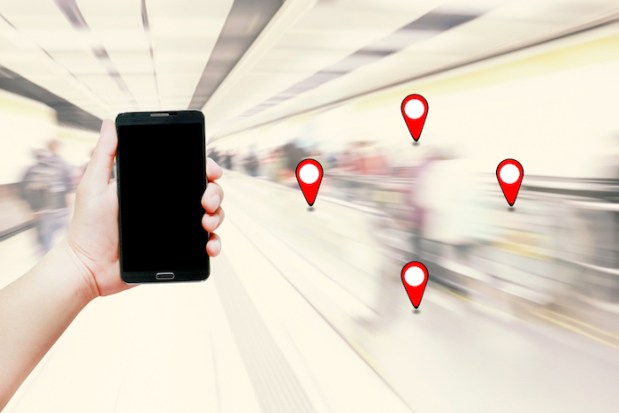Are Retailers Missing The Mark On In-Store Location Tracking?

Of the many ways the rise of mobile devices has prompted brick-and-mortar retailers to evolve, the translation of in-store visits to analyzable data has become a top priority for small and large B&M brands alike. There’s no doubt this is territory that can yield meaningful results for merchants in desperate need of some positive data to cling to, and the growth potential for these consumer-facing metrics is evidenced by the players jumping onto the court.
Just this month, Facebook announced its new plans to offer location-targeting ads that follow up when customers visit stores after viewing targeted promotions. Not to be outdone, Google shot back on Twitter that it had tracked over 1 billion store visits by customers since it started monitoring in earnest 18 months ago.
So it’s more than clear that retailers value location-tracking data when it comes to improving their own experiences. But why should they be stingy about turning the same benefits of in-store location data over to consumers themselves?
It’s a shift that’s taking place slowly, with a handful of retailers announcing their own plans earlier this month to flip location data on its head. Staples was the first to do so with an announcement for a pilot program that would let shoppers browse an interactive map of its stores through the official Staples app. Aimed at shoppers who know what they intend to buy and would rather grab-and-go than browse the aisles, the app update also lets consumers tag items for later, which drops pins on the interactive map to guide shoppers to the exact in-store location they want.
As of June 2, the pilot program is live in 83 Staples storefronts in New Jersey, New York, Massachusetts and Washington state, and according to Faisal Masud, EVP of global eCommerce at Staples, it’s already helped “create a more user-friendly and customized shopping experience that adds real value to [shoppers’] Staples experience.”
Not to be outdone, though, Target has launched its own version of consumer-facing in-store location tracking, complete with a Staples-like interactive in-store map personalized to each applicable location. However, where Target outdoes Staples on the interactive front is in coupons and discounts; if consumers have saved coupons to their apps, the corresponding shelf space is automatically highlighted on the in-store map to make sure customers don’t miss out on a single deal. Innovations like this also have the added benefit of taking some heat off of in-store associates harried by supporting click-and-collect programs; while some shoppers will prefer to buy and pickup, showing customers that their products are waiting in aisle 10 for them will have at least a few do-it-yourselfers collect their intended purchases themselves.
If shoppers like it, that’s usually reason enough for any retailer to implement an innovation like this, but opening up the power of in-store location tracking to consumers has more pros to it than those that directly relate to the bottom line. Any technology that tracks data through consumers’ personal devices runs the risk of acquiring a negative and occasionally predatory reputation, and recent surveys suggest that as many as 67 percent of shoppers see the increasingly varied ways B&M retailers keep their eyes on them as “creepy.”
Consumers have consistently shown that they are willing to trade some elements of privacy in return for digital experiences that are worth their trouble, and the rapidly improving in-store mapping services may be just that. At the very least, retailers should hope that consumers are so enamored with the new way to interact with physical storefronts, because at the rate they’re tying their fates to in-store traffic data, there needs to be some counterbalance that assures shoppers that all the data being mined from them comes with some explicit benefit to all parties involved.
